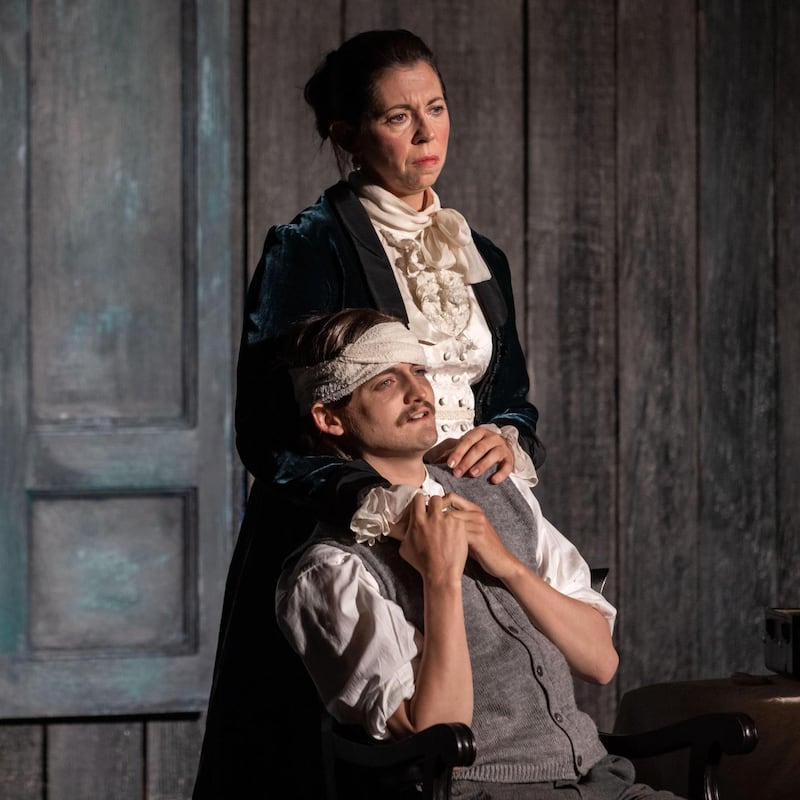THE SEAGULL
Coole Park, Co Galway
★★★☆☆
What is it about Chekhov that Irish playwrights are so drawn to? Is it the misery? In a play where no one is happy, jealousy, unrequited love and self-doubt provide useful fodder for another Russian-Irish dramatic union.
One could be forgiven for thinking the now-annual Druid pilgrimage to Coole Park is more for convenience than for dramaturgy, given current restrictions. But this is not the case for Thomas Kilroy’s version of The Seagull. The atmospheric location is a fitting home for this contemporary production. Where better to convey the journey from riches to ruination of the Anglo-Irish landed class than on the site where the ghostly absence of a former Big House pervades?
The sharing of the same sky (especially once darkness falls) draws the audience into the world of the play. The frequent atmospheric changes seem to overflow into our own watching space. The fourth wall no longer feels impregnable in the way Chekhov’s world usually does, and the complementary skills of Francis O’Connor (set) and James F Ingalls (lighting) enhance this dynamic.
In fact it is in the performances that this production falters. The usually robust Druid ensemble falls apart somewhat in The Seagull. It presents as a myriad of individually strong performances without the sense of cohesion that Garry Hynes's direction usually offers.

Eileen Walsh and Marie Mullen give characteristically powerful performances as Isobel and Pauline. Jack Gleeson delivers a dark and physical representation of the complex Constantine. But John Olohan’s Cousin Gregory and Agnes O’Casey’s Lily are slightly overplayed, resulting in an unbalanced and at times unwieldy production.
Kilroy’s script is very self-aware, but when the unflappable Dr Hickey (Brian Doherty) observes the importance of universals in theatre, you feel a sense of irony tugging. The watery adoration displayed by the play’s lovelorn characters jars somewhat with contemporary universals. The miserable love triangle between Lily, Constantine and Mr Aston (Marty Rea) fails to capture the audience, who must find somewhere else to place their interest.
Enter Mary, stage left. By far the most interesting character in Hynes's production, Mary is played convincingly by Bláithín Mac Gabhann, conveying the character's sheer fed-up-ness with entertaining, refreshing vigour. Mac Gabhann artfully tugs at the threads of false appearances propping up the world of the play, with a performance of pragmatism contradicting the aura of myth that at times stifles the rest of the ensemble.
This play is a tug of war between the old and the new in more ways than one, and although this production doesn't always clearly convey its intentions, the power of the space it sits in keeps it on solid ground.
Runs until August 21st
















